Python Exercise: Slice a tuple
13. Slice a Tuple
Write a Python program to slice a tuple.
Visual Presentation:

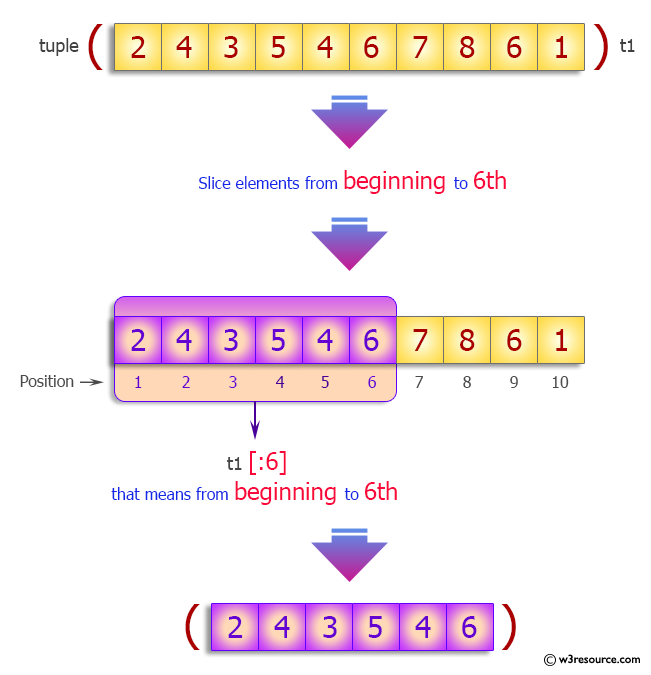


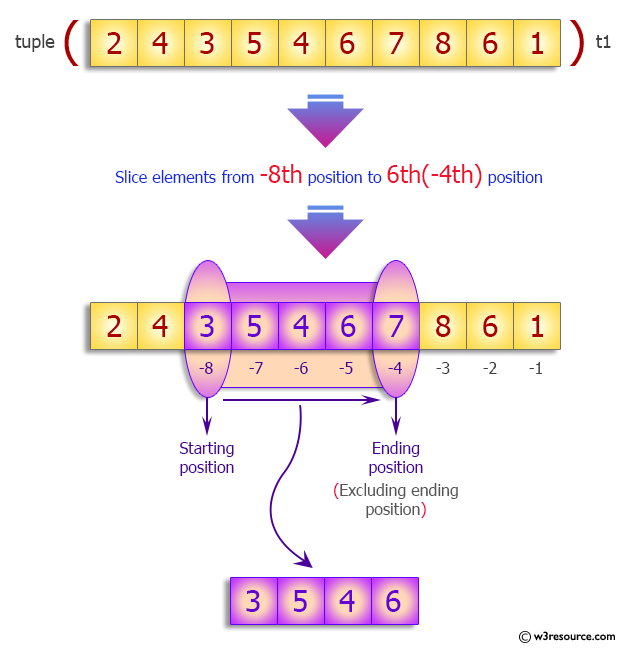
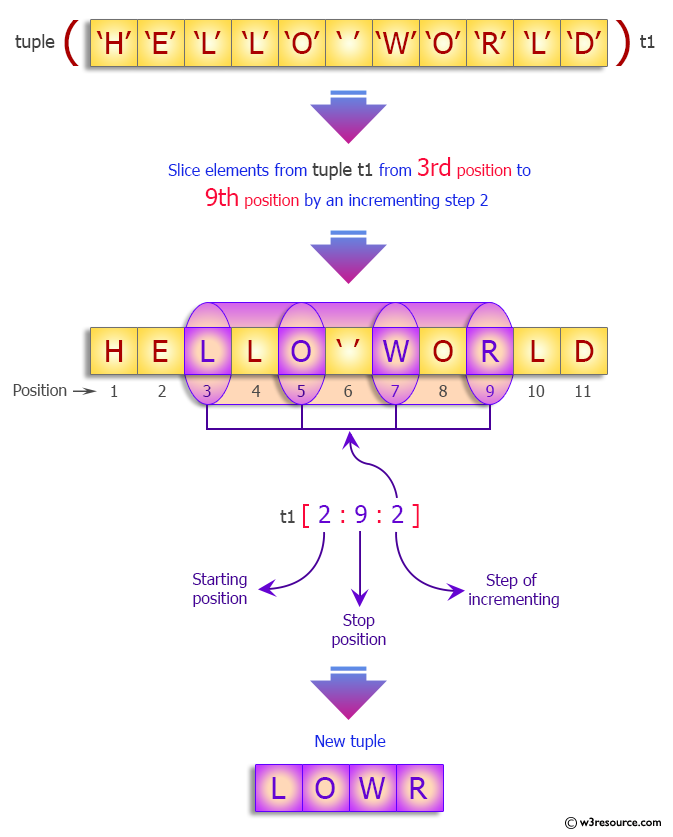
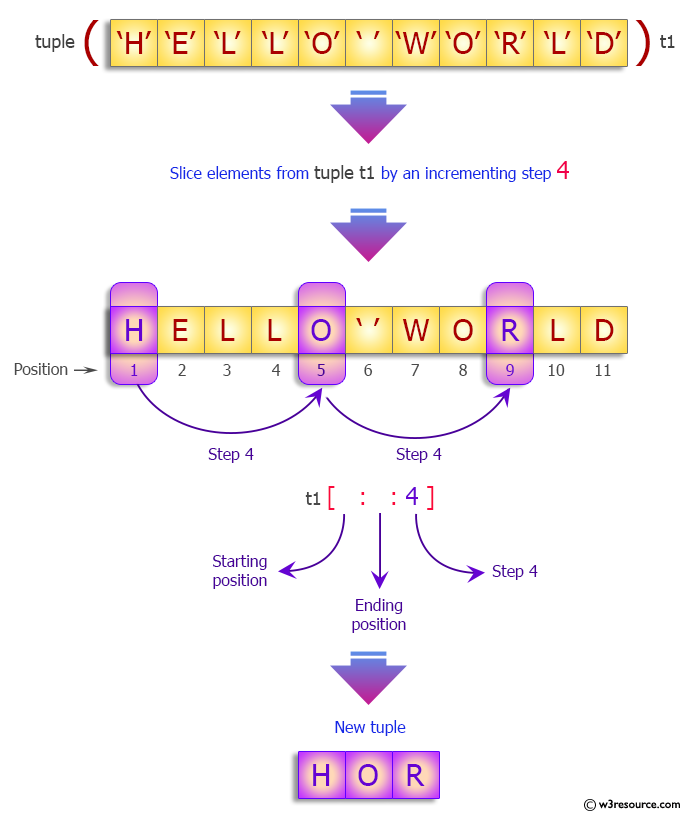
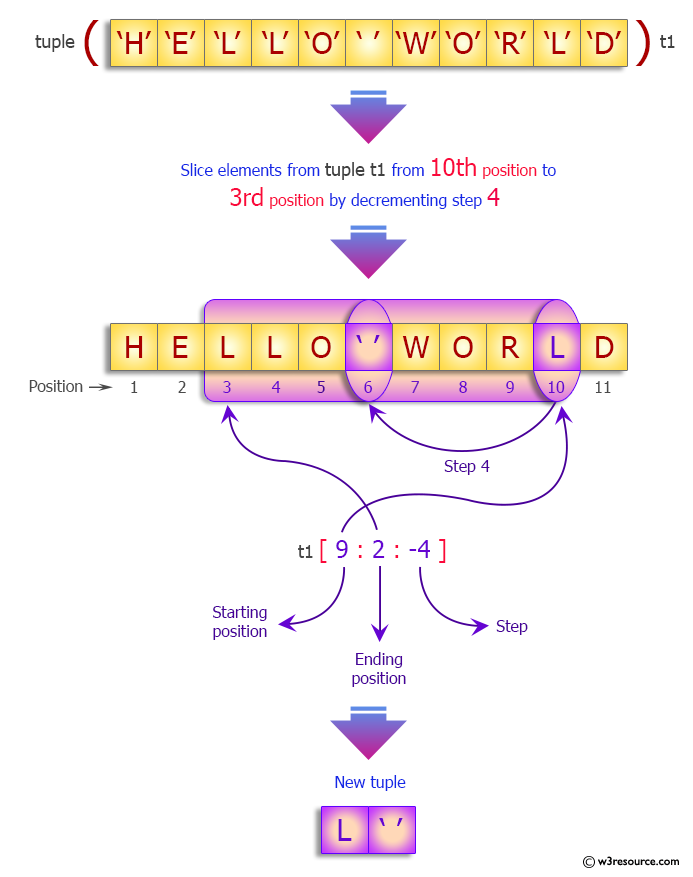
Sample Solution:
Python Code:
# Create a tuple containing a sequence of numbers
tuplex = (2, 4, 3, 5, 4, 6, 7, 8, 6, 1)
# Use tuple slicing (tuple[start:stop]) to extract a portion of the tuple.
# The start index is inclusive, and the stop index is exclusive.
# Slice from index 3 (inclusive) to 5 (exclusive) and store it in the variable '_slice'
_slice = tuplex[3:5]
print(_slice)
# If the start index isn't defined, it's taken from the beginning of the tuple.
_slice = tuplex[:6]
print(_slice)
# If the end index isn't defined, it's taken until the end of the tuple.
_slice = tuplex[5:]
print(_slice)
# If neither start nor end index is defined, it returns the full tuple.
_slice = tuplex[:]
print(_slice)
# The indexes can be defined with negative values.
# Slice from -8 (inclusive) to -4 (exclusive) and store it in the variable '_slice'
_slice = tuplex[-8:-4]
print(_slice)
# Create another tuple containing the characters of "HELLO WORLD"
tuplex = tuple("HELLO WORLD")
print(tuplex)
# Use step to specify an increment between the elements to cut the tuple.
# tuple[start:stop:step]
# Slice from index 2 to 9 with a step of 2 and store it in the variable '_slice'
_slice = tuplex[2:9:2]
print(_slice)
# Slice with a step of 4, which returns a tuple with a jump every 3 items
_slice = tuplex[::4]
print(_slice)
# When the step is negative, it reverses the order, slicing from index 9 to 2 with a step of -4
_slice = tuplex[9:2:-4]
print(_slice)
Sample Output:
(5, 4)
(2, 4, 3, 5, 4, 6)
(6, 7, 8, 6, 1)
(2, 4, 3, 5, 4, 6, 7, 8, 6, 1)
(3, 5, 4, 6)
('H', 'E', 'L', 'L', 'O', ' ', 'W', 'O', 'R', 'L', 'D')
('L', 'O', 'W', 'R')
('H', 'O', 'R')
('L', ' ')
Flowchart:
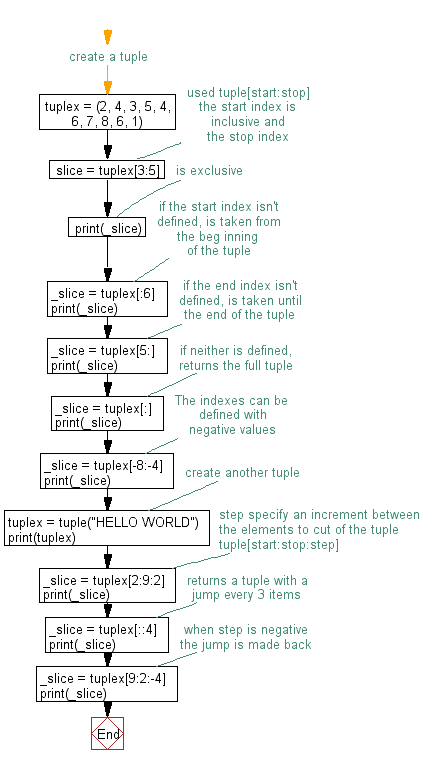
For more Practice: Solve these Related Problems:
- Write a Python program to extract a sub-tuple from a given tuple using slicing syntax.
- Write a Python program to create a new tuple by slicing every other element from an original tuple.
- Write a Python program to slice a tuple to retrieve a specific range of elements and print the resulting tuple.
- Write a Python program to use negative slicing to obtain a sub-tuple from the end of a tuple.
Go to:
Previous: Write a Python program to remove an item from a tuple.
Next: Write a Python program to find the index of an item of a tuple.
Python Code Editor:
What is the difficulty level of this exercise?
Test your Programming skills with w3resource's quiz.
